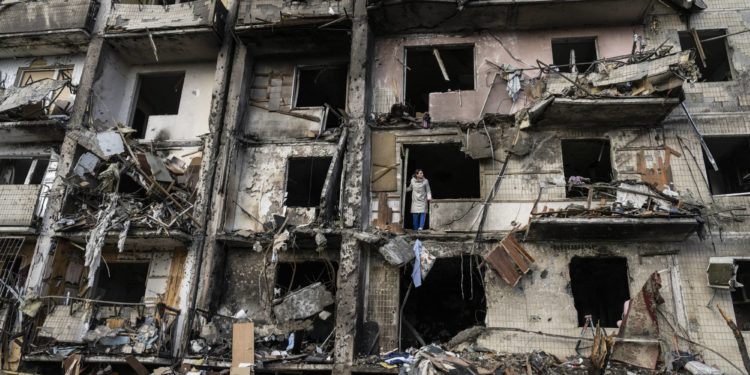Ukraine War: World Bank puts damage to infrastructure at $60bn
The World Bank Group has completed an early assessment of the physical damage to Ukraine’s infrastructure in view of the ongoing war between it and Russia.
The World Bank per its assessment, puts the cost in terms of buildings and infrastructure [the narrow cost] at roughly $60 billion dollars and this does not include the growing economic costs to Ukraine’s economy.
Given that the war is still ongoing, the costs are expected to continue rising.
Speaking at the 2022 Spring Meetings Ministerial Roundtable for Support to Ukraine on April 21, 2022, President of the World Bank, David Malpass noted that, Ukraine’s government and state-owned enterprises face a large non-military fiscal deficit and debt burden.
Action to Support Relief, Recovery and Reconstruction
Since the invasion, the World Bank has provided fast-disbursing financial support to help the government provide critical services, pay wages for hospital workers, public servants, and the elderly.
Through IFC, the World Bank have provided immediate working capital for companies providing supplies to Ukraine.
“We have now mobilized more than $3 billion dollars for Ukraine to support the continuation of essential government services. This was made possible, and I want to thank the grant contributions through our Multi-Donor Trust Fund (MDTF) from the United States, the United Kingdom, Norway, Denmark, Austria, Latvia, Lithuania, Iceland; and guarantees from the United Kingdom, Netherlands, and Sweden; and parallel financing from Japan.
Read: 3 Ghanaians petition Parliament to impeach Prez Akufo-Addo
“These announcements were still being made today. And I know many other countries are also putting money directly into the support effort for Ukraine. Our mechanisms are providing rapid, targeted, and secure delivery of this support to Ukraine in the challenging times.
“The priority should be to fill Ukraine’s current financing needs in a way that minimizes its future debt burden. Grant contributions will be very important. Our MDTF is one mechanism that can be utilized. I also would like to acknowledge complementary approaches, including the IMF’s Administered Account, the European Union’s Solidarity Trust Fund, EBRD’s Resilience Package,” said Mr Malpass.
“It will be important for all partners to continue coordinating their support for Ukraine’s budget needs,” he added.
Relief, Recovery and Resilient Reconstruction
According to the Bank, it is working towards three phases of recovery efforts of relief, recovery, and resilience.
“As the war continues, we will work to build confidence in Ukraine’s financial, monetary, and fiscal institutions, fostering currency stability as we go forward.
“In the six to eight months after peace, we believe the reconstruction of essential infrastructure connectivity—such as transport, power, heating, and digital—should be urgently addressed.
“And then, over the medium term, reinforcing the macro-fiscal capacity; rebuilding cities and households; and strengthening the agriculture and business sectors,” Mr Mr Malpass noted.
The war has been devastating for Ukraine’s people and its economy.







